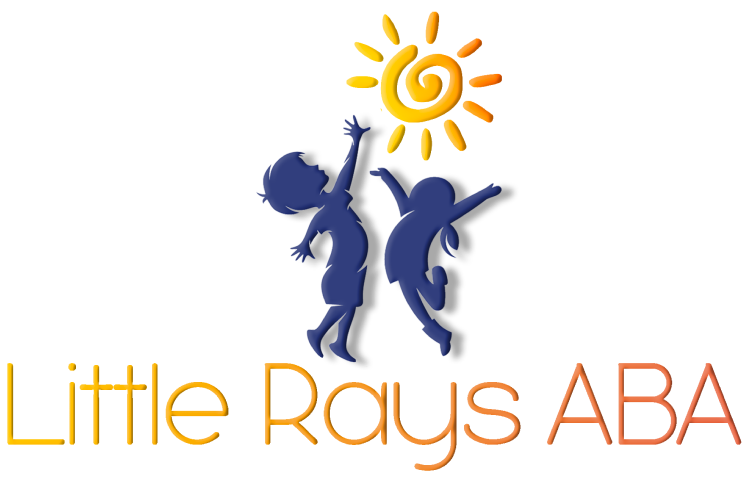Understanding Levels of Autism
Introduction to Autism Spectrum Disorder
Autism Spectrum Disorder (ASD) is a developmental disorder characterized by a range of challenges related to social skills, repetitive behaviors, speech, and nonverbal communication. The term "spectrum" reflects the wide variation in strengths and difficulties experienced by people with autism.
According to the 5th edition of the Diagnostic and Statistical Manual of Mental Disorders (DSM-5), autism is categorized into three distinct levels based on the individual's support needs.
Recognizing these levels can help parents, caregivers, and professionals understand the varying degrees of support required by children with autism, allowing for tailored interventions and care plans. It's essential to remember that while the levels provide a useful framework, each child is unique, and individualized support is crucial.
Levels of Autism Spectrum Disorder
The DSM-5 classification of autism spectrum disorder breaks down into
three levels, each describing the severity and support needs of the individual. Each level provides insight into the person's social communication abilities and the extent of repetitive behaviors and interests
| Level | Description | Support Needs |
|---|---|---|
| Level 1 (Requiring Support) | Considered the mildest form of ASD. Individuals may struggle with social cues, maintaining relationships, and engaging in back-and-forth conversations. Infexibility of behavior may be present. Commonly associated with former diagnosis of Asperger's syndrome. | Minimal support required; assistance may be needed in specific situations. |
| Level 2 (Requiring Substantial Support) | Individuals exhibit more noticeable challenges in social interactions, limited verbal communication, and more pronounced repetitive behaviors. | Substantial support needed daily; moderate to high level of intervention required to help with daily tasks |
| Level 3 (Requiring Very Substantial Support) | Characterized by severe difficulties in social interactions and communication. Repetitive behaviors and extreme difficulty coping with change are prevalent. | Very substantial support needed; intensive and consistent intervention necessary to manage daily activities. |
Parents and caregivers should also be aware that even those classified under Level 1 may face significant challenges in various aspects of life. Each individual's unique strengths and needs must be acknowledged to provide the most effective support.
Characteristics of Level 1 Autism
Overview of Level 1 ASD
Level 1 of Autism Spectrum Disorder (ASD) is identified as the mildest form on the spectrum. It includes individuals who previously would have been diagnosed with Asperger's syndrome. These individuals typically possess average to above-average intelligence but face challenges particularly in social settings. They may struggle with:
- Understanding social cues
- Maintaining relationships
- Engaging in back-and-forth conversations
- Behavioral inflexibility
According to the Centers for Disease Control and Prevention, about 1 in 54 children are diagnosed with autism, yet Level 1 symptoms might remain unnoticed until adulthood.
Support Needs for Level 1 Individuals
Individuals with Level 1 ASD have low but necessary support needs. Support strategies for these individuals typically aim at improving their communication skills, fostering social interaction, and helping them with organizational skills and life planning.
Support may include:
- Behavioral Therapy: Tailored programs targeting communication and social skills are key. Consistent, positive reinforcement strategies where family involvement is integral can be particularly effective.
- Structured Routines and Schedules: Assisting with daily organization and planning to reduce anxiety and improve functionality.
- Social Skills Training: Focused on teaching individuals how to interpret social cues and engage in reciprocal conversations.
- Workplace or Academic Accommodations: Modifications, such as flexible deadlines or a quiet workspace, can help manage stress and enhance productivity.
| Aspect of Support | Description |
|---|---|
| Behavioral Therapy | Improves communication and social skills using positive reinforcement |
| Structured Routines | Helps manage daily tasks and reduces anxiety |
| Social Skills Training | Teaches interpretation of social cues and conversation skills |
| Academic/Workplace Accommodations | Provides a supportive environment to enhance performance and reduce stress |
Individuals at Level 1 can sometimes mask their autism traits, which makes it challenging to access appropriate care. Recognizing their unique strengths and needs is essential for providing effective and customized support.
Exploring Level 2 Autism
Level 2 Autism Spectrum Disorder (ASD) is characterized by individuals who require substantial support. This level involves significant challenges in social communication, pronounced repetitive behaviors, and difficulty coping with changes in routine.
Features of Level 2 ASD
Individuals diagnosed with Level 2 ASD typically face more severe challenges compared to those with Level 1.
- Social Communication Difficulties: They often struggle with both verbal and nonverbal communication. This can make participating in typical social interactions challenging and can lead to misunderstandings.
- Pronounced Repetitive Behaviors: These individuals exhibit more pronounced repetitive behaviors, such as repeated movements or specific routines that they find comforting.
- Difficulty with Change: People with Level 2 ASD often find it hard to cope with changes in routine or environment, which can lead to heightened anxiety or behavioral issues.
- Heightened Sensitivity: They may also have heightened sensitivity to environmental factors such as noise, light, or textures. This sensitivity can impact their ability to engage in typical daily activities.
Coping Strategies for Level 2 Individuals
Providing substantial support is essential for individuals with Level 2 ASD. Here are some effective coping strategies:
- Structured Routines: Establishing and maintaining consistent routines can help individuals feel more secure and reduce anxiety.
- Visual Supports: Visual aids such as pictures, charts, and schedules can improve comprehension and communication.
- Behavioral Therapies: Engaging in structured behavioral therapies like Applied Behavior Analysis (ABA) can be beneficial. These therapies focus on improving specific behaviors, including communication and social skills.
- Sensory Integration Therapies: Integrating therapies that address sensory sensitivities can help manage heightened reactions to environmental stimuli.
- Social Skills Training: Programs designed to enhance social skills can aid individuals in navigating social situations more effectively.
- Early Intervention Programs: Tailored and structured early intervention programs involving parents, caregivers, and teachers can significantly positively impact communication and behavior.
Providing the necessary support and understanding for individuals with Level 2 ASD can make a significant difference in their daily lives and development. Through thoughtful strategies and interventions, these individuals can achieve their full potential.
Delving into Level 3 Autism
Level 3 Autism Spectrum Disorder (ASD) represents the most severe form of autism, requiring substantial support in various aspects of daily life. Individuals at this level exhibit significant challenges in communication and behavior that necessitate comprehensive support systems.
Traits of Level 3 ASD
Individuals with Level 3 ASD face profound difficulties in social interaction and communication, often leading to severe impairments in daily functioning. These individuals may find it very difficult to use or understand both verbal and nonverbal communication. They may also struggle with forming relationships and engaging in typical social activities due to their limited social engagement and behavior flexibility.
Key traits include:
- Severe communication challenges: Many Level 3 individuals are nonverbal or use only a few words. Alternative communication methods like sign language or picture boards may be necessary.
- Limited social interaction: There is minimal interest in social interactions, and engaging with others can be profoundly challenging.
- Inflexible behaviors: Highly restricted, repetitive behaviors and extreme difficulty in adapting to changes or transitions.
- Challenging behaviors: These individuals may exhibit meltdowns, aggression, or self-harm and often need extensive supervision.
Support Requirements for Level 3 Individuals
Individuals with Level 3 ASD require very substantial support across multiple areas. These supports aim to help them manage their daily lives and improve their quality of life.
1. Intensive Behavioral Therapies
Behavioral therapies like Applied Behavior Analysis (ABA) can be essential. These therapies focus on developing social, communication, and life skills through structured interventions.
2. Occupational Therapy (OT)
Occupational therapy aids in teaching daily living skills such as dressing, eating, and bathing. Programs like the Early Start Denver Model (ESDM) focus on developmental and behavioral principles, catering to early intervention.
| Type of Therapy | Areas of Focus |
|---|---|
| Behavioral Therapy | Social skills, communication, life skills |
| Occupational Therapy (OT) | Independent living skills, ESDM principles |
3. Pharmacological Interventions
Medication can address co-occurring symptoms and conditions such as high energy levels, anxiety, depression, and seizures. Pharmacological approaches are tailored to manage specific issues, enhancing overall well-being.
4. Highly Structured Environments
Creating a predictable environment with clear routines is crucial. Level 3 individuals thrive in settings where schedules are consistent, and transitions are minimal.
5. Specialized Education Programs
Special education services tailored to the needs of these individuals can help in developmental learning. These programs typically include one-on-one support and highly individualized educational plans.
By understanding the traits and support needs of individuals with Level 3 ASD, parents, and caregivers can better navigate the challenges and provide the necessary assistance for their loved ones. Comprehensive and tailored interventions are crucial to ensuring their overall growth and well-being.
Understanding the different levels of autism spectrum disorder highlights the importance of personalized care. Best ABA therapy and support services are essential for addressing the unique needs of individuals across the spectrum. If you're looking for comprehensive support for your child, reach out to local providers today to explore how tailored ABA services can promote meaningful progress and improve overall well-being.
Diagnostic Guidelines and Support
DSM-5 Classification of Autism
The Diagnostic and Statistical Manual of Mental Disorders, Fifth Edition (DSM-5), classifies Autism Spectrum Disorder (ASD) based on the level of support required by the individual. This classification into three distinct levels helps in identifying the specific needs and appropriate interventions for autistic individuals.
- Level 1: Requires support. Individuals at this level have noticeable difficulties in social interaction and executive functioning, which can impact daily life. They may be able to mask their autism well but still struggle with organization and planning.
- Level 2: Requires substantial support. This level includes individuals who have marked deficits in verbal and non-verbal communication skills, as well as more pronounced difficulties with social interactions and changes in routine.
- Level 3: Requires very substantial support. Individuals at this level have severe impairments in communication and social interactions, and they often find it extremely difficult to cope with changes.
Importance of Early Diagnosis and Intervention
Early diagnosis and intervention are critical in managing Autism Spectrum Disorder. An autism diagnosis can be made as early as 18 months old. Screening is recommended by the Centers for Disease Control and Prevention (CDC) and involves observations, questionnaires, and interviews with parents, teachers, and close individuals.
Early intervention during the preschool years significantly enhances the communication skills and developmental outcomes of children with ASD. Tailored and structured programs that involve the child's behavior and communication skills are effective. Continuous reinforcement of positive actions and involvement of caregivers in daily routines are also crucial.
Alternative communication methods such as sign language or symbol systems are often employed for children who might not develop oral speech and language skills. Speech-language pathologists play an essential role in evaluating and treating speech and language problems in children with ASD.
In conclusion, the DSM-5's classification scheme and the emphasis on early diagnosis and tailored intervention strategies are essential in providing the best support and care for autistic individuals. By understanding the unique needs at different levels of autism, parents and caregivers can better navigate the journey and ensure their child's growth and development.
Tailored Interventions and Care
Behavioral Therapies for ASD
Behavioral therapies are crucial in treating the symptoms of Autism Spectrum Disorder (ASD). Applied Behavior Analysis (ABA) stands out among these treatments. ABA uses techniques and principles to bring about meaningful and positive changes in behavior.
ABA techniques can be varied, including:
- Discrete Trial Training (DTT)
- Pivotal Response Training (PRT)
- Verbal Behavior Intervention (VBI)
The primary goal of ABA is to increase helpful behaviors while decreasing those behaviors that are harmful or affect learning.
| Behavioral Therapy | Primary Focus |
|---|---|
| Applied Behavior Analysis (ABA) | Improves social, communication, and learning skills through reinforcement |
| Discrete Trial Training (DTT) | Teaches skills in a controlled, step-by-step manner |
| Pivotal Response Training (PRT) | Focuses on pivotal areas of development such as motivation and self-initiation |
Little Rays ABA is Florida's trusted leader in providing customized ABA therapy for children with autism. Their expert team focuses on understanding each child's unique needs and creates tailored therapy plans that promote growth and skill development across the spectrum. If you're looking for a compassionate, results-driven approach to help your child thrive, contact Little Rays ABA today and take the first step toward unlocking your child's potential.
Role of Occupational and Social Support
Occupational therapy (OT) and social support play vital roles in helping individuals with ASD navigate their daily lives.
Occupational Therapy (OT):
OT focuses on teaching skills that help individuals with autism live as independently as possible. This includes daily activities such as dressing, eating, and bathing. One specific approach within OT is the Early Start Denver Model (ESDM), which is a developmental approach based on the principles of ABA.
Key Areas of Occupational Therapy for ASD:
- Self-care skills
- Fine motor skills
- Adaptive skills
Social-Relational Treatments:
Social-relational treatments aim to enhance social skills and foster emotional bonds. Some therapies involve parents or peer mentors, boosting the effectiveness of the treatment through relational involvement. Examples include programs that incorporate:
- Social skills groups: Enhances social interaction abilities
- Peer-mediated interventions: Engages peers to model and practice social behaviors
- Parent training: Educates parents to support their child’s social development
These treatments provide a structured environment where individuals with ASD can practice social interactions, improving their ability to relate to others and build meaningful relationships.
By blending behavioral therapies with occupational and social support, tailored interventions can significantly improve the quality of life for individuals across the levels of autism spectrum disorder.
Unlock Your Child's Potential with Expert ABA Therapy!
At Little Rays ABA, we provide compassionate, evidence-based ABA therapy to help children with autism thrive. Our personalized approach fosters growth in communication, social skills, and independence.
Get In Touch With Us Today to Get Started With ABA Therapy!
Related Posts
MENU
GET IN TOUCH
7117 San Salvador Dr Boca Raton, FL 33433
3200 Collins Ave Miami Beach, FL 33140





